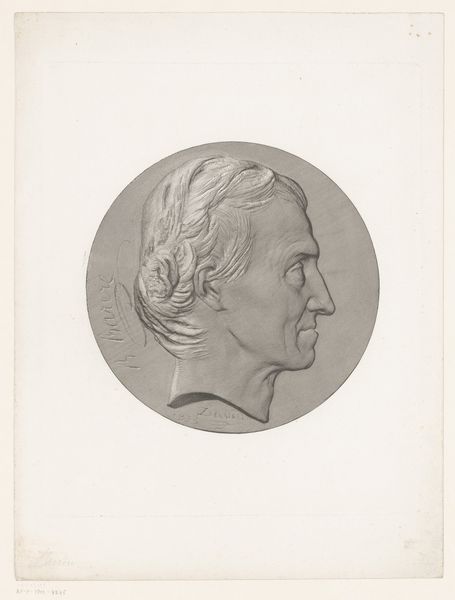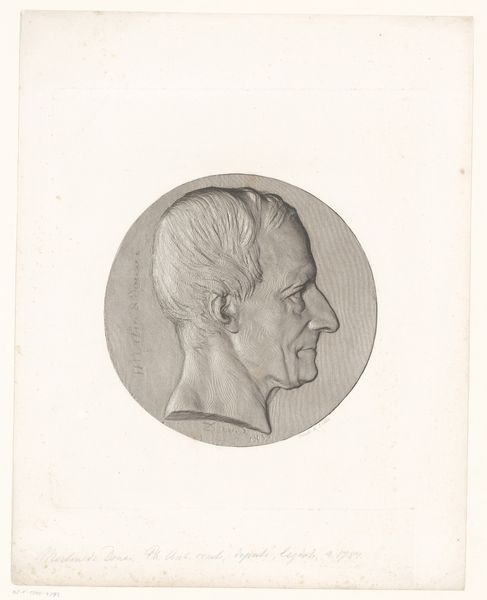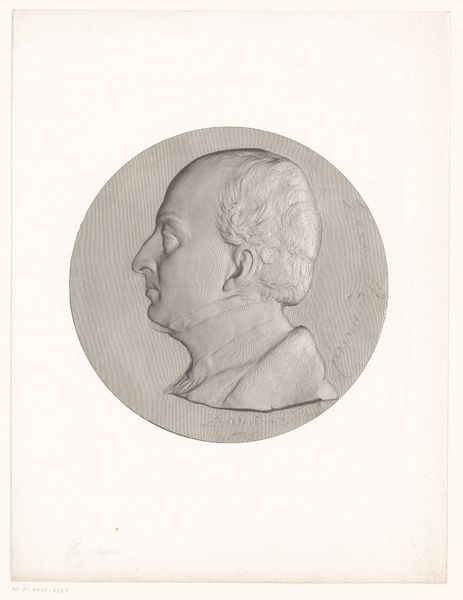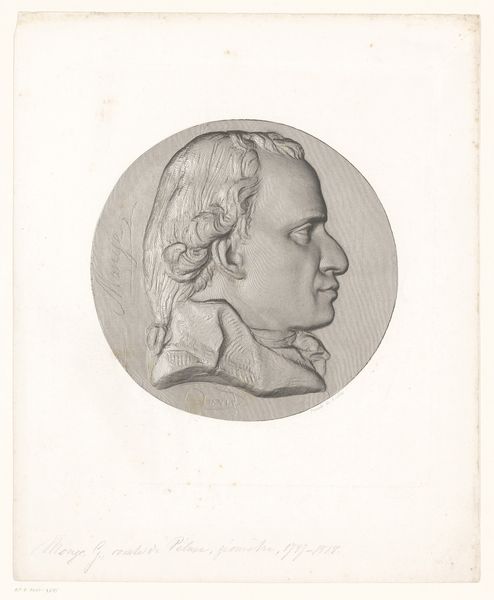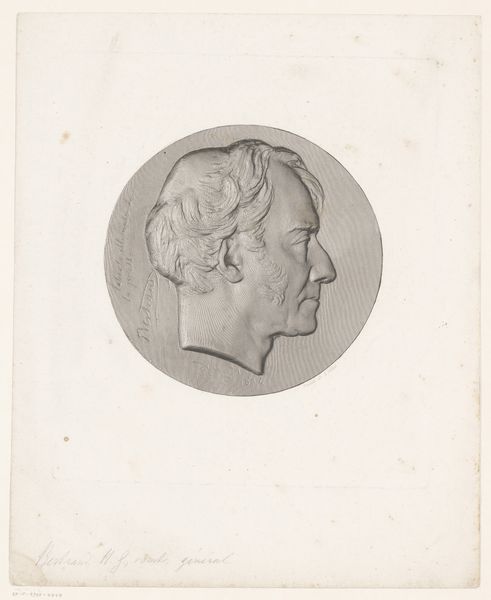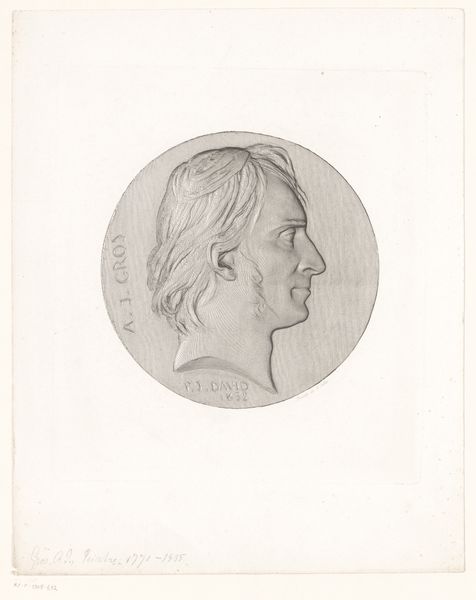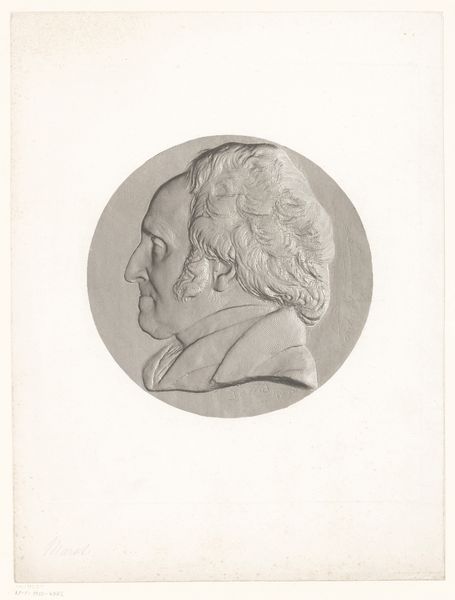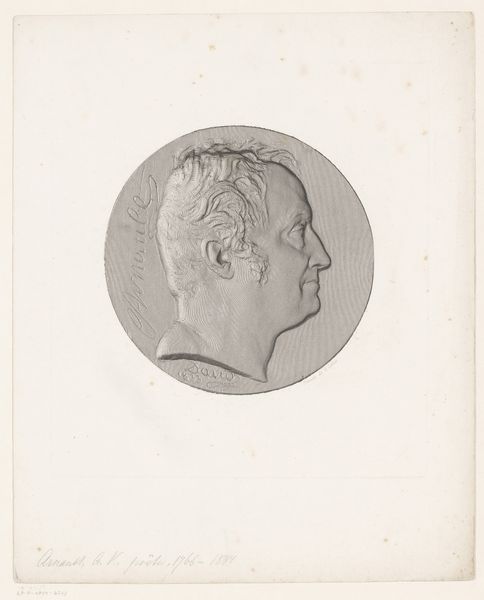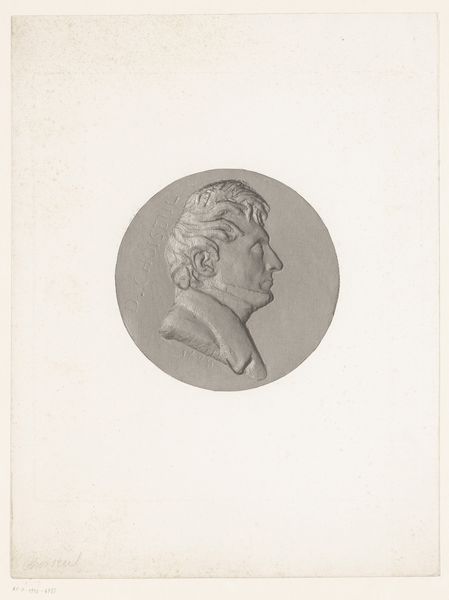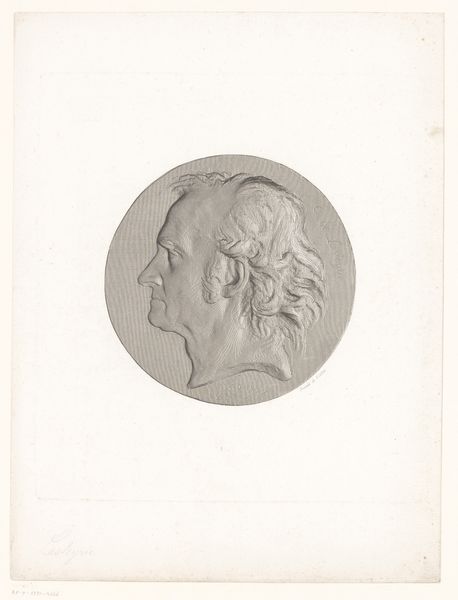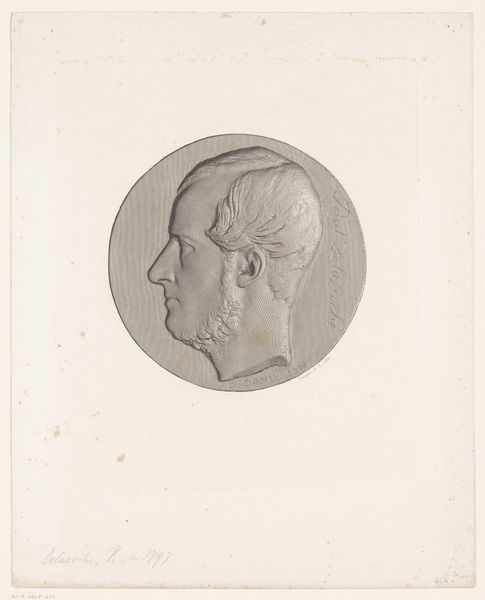
relief, pencil
#
portrait
#
neoclacissism
#
relief
#
caricature
#
pencil drawing
#
pencil
#
portrait drawing
Dimensions: height 253 mm, width 218 mm
Copyright: Rijks Museum: Open Domain
Editor: Here we have "Medaille met portret van Charles Percier," after 1835, attributed to Achille Collas, crafted using pencil. It’s rendered like a bas-relief on paper, and there’s a somber quality to the portrait. How do you interpret this work within its historical context? Curator: I see this as a potent example of how neoclassical aesthetics served specific power dynamics in 19th-century France. Percier, a prominent architect, is presented in a detached, idealized form reminiscent of Roman emperors. But whose narrative does this serve, and whom does it exclude? Editor: What do you mean by "whose narrative?" Curator: Consider the era's emphasis on rationality and order, often weaponized to suppress revolutionary sentiments and solidify bourgeois authority after upheaval. By immortalizing Percier through classical allusions, it actively reinforces a very particular status. Notice how this stylistic choice elevates him while simultaneously erasing other potentially more diverse artistic perspectives of the time. Who were the other designers who couldn't afford to promote themselves in the same circles as Charles Percier? Editor: That’s a really interesting point. It seems the image promotes a selective memory. Did Percier's architectural work also reinforce such hierarchies? Curator: Precisely! Think about the visual language of grand public projects and private commissions from that period and their connection with politics and society. How might Percier's designs legitimize a particular social order? Examining his works offers crucial insights into the relationship between aesthetics and power structures of 19th century France. Editor: I hadn't considered the potential for art to both reflect and construct social inequalities. It's given me a lot to think about, especially how visual representation plays a role in solidifying privilege and the dangers of it becoming the prevailing singular idea of an individual or entire social status. Curator: Exactly. Questioning whose stories get told through art is a crucial skill. This medal, simple as it appears, opens up avenues to critically examine the narratives shaping our understanding of the past and the art we appreciate.
Comments
No comments
Be the first to comment and join the conversation on the ultimate creative platform.
